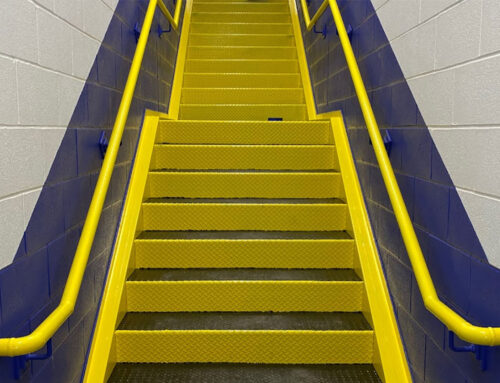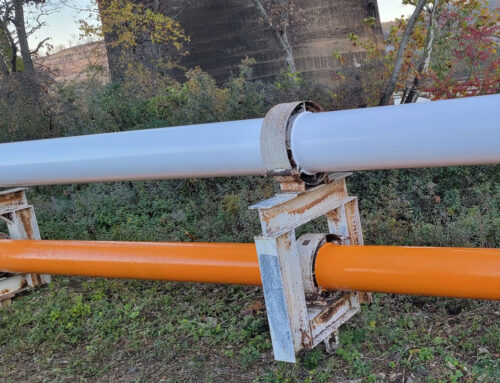What Metallizing is and Why It’s Important
Steel structures, no matter where they are or who built them, have one familiar foe: the moisture that leads to corrosion. To combat impending corrosion, industrial painters use a process called metallizing.
The first step in metallization is surface preparation. Commonly, industrial painters will use White Metal Wet Abrasive Blast Cleaning to remove soil, rust, and debris from the substrate. Then, they assess the surface profile to make sure they can proceed to metallization.
What the Metallization Techniques Are
There are four umbrella types of metallization:
- Thermal spray. A molten or semi-molten metal is sprayed onto a surface at extremely high temperatures.
- Cold spray. A metal-based powder is applied onto a surface at room temperature.
- Zinc spray. Powder zinc is melted and sprayed onto a substrate. It is the most cost-effective form of metallization and typically must be sealed with polyurethane or resin.
- Hot-dip galvanizing. The surface is dipped into a molten zinc bath and then cooled during the galvanizing process.
In this post, we’ll highlight the cutting-edge metallization technique, thermal spraying, and its most versatile type of application, High Velocity Oxygen Fuel (HVOF).
How Industrial Painters Use HVOF in Thermal Spraying
During the metallizing process, industrial painters spray a molten alloy onto the steel surface. The British HVOF equipment manufacturer explains that kerosene or hydrogen mix with oxygen, ignite in the jet’s combustion chamber, and accelerate through a nozzle.
The type of molten alloy will vary in order to match the needs of the steel structure’s location, the elements it’s exposed to, and the industry it supports. For example, a bridge over brackish water will have a different alloy applied during metallization than an oil tank in the desert.
Science Direct describes the HVOF jet as “supersonic”, depositing coating materials on a substrate at a significantly higher speed than a conventional flame spray. The layers created during HVOF are less porous. As a result, the applied coating prohibits substantial levels of oxidation on the substrate.
HVOF coatings provide exceptional resistance to abrasion, temperature fluctuations, and rust. They can increase the steel structure’s durability by approximately 20 years. In addition to being more highly effective than other thermal spray techniques, HVOF coatings present two value benefits our clients love: a shorter processing time and relatively low cost.
How Metallizing with Eagle Eye Services Benefits Your Industrial Business
The region where we operate presents a unique set of challenges because of the environmental elements our clients face. The Northeast experiences more than 40 inches of precipitation annually, according to the National Oceanic and Atmospheric Administration. It also has thousands of miles of coastline. A metallized surface gives a steel structure its best fighting chance against weather, be it sun, wind, rain, or snow.
Our industrial painters apply metallizing to steel bridges, electric plants, transmission towers, oil refineries, natural gas pipelines and tanks, and production facilities. Every industry Eagle Eye Services works with can benefit from metallizing services. Contact us today to learn how Eagle Eye Services can help your industrial business.
You may also be interested in:
Ready to Get Started?
Have questions about your project or need a quote? We’ve got someone ready to help you.



